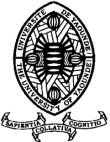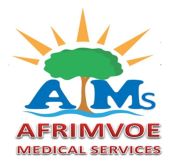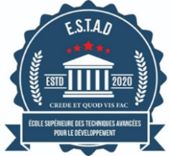Profil d’Expression de l’Oncoprotéine Her2 dans les Carcinomes Mammaires au Cameroun
Expression Profile of Her2 Oncoprotein in Breast Carcinoma in Cameroon
DOI :
https://doi.org/10.5281/hra.v2i7.5844Mots-clés :
cancer, sein, oncoprotéine, Her2, immunohistochimie, CamerounRésumé
RESUME
Introduction. Au Cameroun, peu d’études ont été effectuées sur l’expression de l’oncoprotéine HER2 dans les carcinomes mammaires. L’objectif de notre étude était d’étudier le profil d’expression de l’oncoprotéine HER2 dans les carcinomes mammaires au Cameroun. Méthodologie. Il s’agissait d’une étude transversale sur une période de 2 ans allant de 2013 à 2014, portant sur tous les cas de carcinome mammaire reçus au centre pasteur du Cameroun. Pour chaque cas nous avons déterminé l’âge, les types histologiques des tumeurs, le stade pathologique, le statut des récepteurs hormonaux de chaque cas, les grades histopronostiques selon Ellis et Elston, la recherche de l’oncoprotéine HER2, l’index de prolifération (Ki67). Résultats. Nous avons inclus 84 carcinomes mammaires avec une moyenne d’âge de 49,95±14,19. Les types histologiques observés étaient de façon décroissante canalaire, papillaire, lobulaire, colloïde et composite. La fréquence des cancers Her2+ était de 14% avec une prédominance pour les tumeurs non hormono-dépendantes (66,7%). La surexpression de l’oncoprotéine HER2 était plus importante pour les grades 2 et 3 selon Ellis et Elston (83%) et pour un index de prolifération supérieur à 20% soit 3/4 des tumeurs Her2+. Par ailleurs les cancers triple-négatifs étaient les plus fréquents soit 42,8% de tous les carcinomes mammaires. Il n y’avait pas d’association significative entre les facteurs morphologiques et l’expression de l’oncoprotéine Her2 dans les cancers mammaires : grade histologique (P=0,209), type histologique (P=1), récepteurs hormonaux (P=0,357) et l’index de prolifération (P=0,487). Conclusion. Les carcinomes mammaires surviennent chez la femme jeune dans notre milieu. Le phénotype “triple négatif” est plus fréquent. La fréquence des cancers Her2+ est de 14% avec une prédominance pour les tumeurs non hormono-dépendantes (66,7%). Par ailleurs le profil immunohistochimique des cancers du sein au CPC offre une rationalité pour un meilleur choix thérapeutique avec des molécules ciblées.
ABSTRACT
Introduction. In Cameroon, few studies have been conducted on the expression of the HER2 oncoprotein in breast carcinomas. The objective of our study was to investigate the expression profile of the HER2 oncoprotein in breast carcinomas in Cameroon. Methodology. This was a cross-sectional study over a period of 2 years from 2013 to 2014, focusing on all cases of breast carcinoma received at the Pasteur Center in Cameroon. For each case, we determined the age, histological types of tumors, pathological stage, hormonal receptor status of each case, histoprognostic grades according to Ellis and Elston, HER2 oncoprotein search, and proliferation index (Ki67). Results. We included 84 breast carcinomas with a mean age of 49.95±14.19. The observed histological types were in descending order ductal, papillary, lobular, colloid, and composite. The frequency of Her2+ cancers was 14% with a predominance for non-hormone-dependent tumors (66.7%). HER2 oncoprotein overexpression was more common for grades 2 and 3 according to Ellis and Elston (83%) and for a proliferation index greater than 20%, accounting for 3/4 of Her2+ tumors. Furthermore, triple-negative cancers were the most common, accounting for 42.8% of all breast carcinomas. There was no significant association between morphological factors and HER2 oncoprotein expression in breast cancers: histological grade (P=0.209), histological type (P=1), hormonal receptors (P=0.357), and proliferation index (P=0.487). Conclusion. Breast carcinomas occur in young women in our environment. The "triple negative" phenotype is more common. The frequency of Her2+ cancers is 14% with a predominance for non-hormone-dependent tumors (66.7%). Furthermore, the immunohistochemical profile of breast cancers at the CPC provides a rationale for a better therapeutic choice with targeted molecules.
Références
Robert G Fenton, Dan L Longo. Biologie cellulaire du cancer et angiogenèse : Harrison Principes de médecine interne ; 16e édition Flammarion 2006;453-64
Yuhong LU, Xiaolin Zi, Michaël Pollak. Molecular mechanisms underliying IGF-I-induced attenuation of the growth-inhibitory activity of trastuzumab (herceptin) on SKBR3 breast cancer cells. Int.J.cancer.2004;108:334-341
J. Didi-KoukoCoulibaly, A B Effi, G A Horo, A. Diabate, K. Mbra, I. Adoubi, M. Toure, A. Osseni, K.A. Echimane. Prévalence des récepteurs hormonaux et de HER2dans le cancer du sein au service de cancérologie du CHU de Treichville. Résultats préliminaires.Bull Cancer 2008 ; 95 (9) : 799-803
CNLC (2007) : Guide de la prise en charge des cancers du Cameroun. Première édition, MINSANTE 2007: 38-35
Belley Priso E, Nguemgne C, Nana Njamen T, EgbeObenchemti T, Mouné.Profil Épidémiologique et Clinique de la Pathologie Mammaire à L’Hôpital Général de Douala (Cameroun) . Health Sci. Dis.2010; 11 (2).
Effa'a Christian Serges. Statut des recepteurs hormonaux dans les carcinomes infasifs du sein dans deux structures sanitaires de Yaounde ; Mémoire de fin d'études de spécialisation en anatomie pathologique;FMSB 2008
MetogoNtsamaJunie Annick. Les aspects anatomo-cliniques et immunohistochimiques des cancers du sein de la femme ; Thèse de doctorat en médecine ; FMSB 2012
Atangana, P. J., Tchenté Nguefack, C., Totoum Fotsing, C., et al. Aspects Immunohistochimiques des Cancers du Sein à Douala et à Yaounde. Health Sci. Dis.2017; 18(3).
Eng A, McCormack V, dos-Santos-Silva. Receptor-Defined Subtypes of Breast Cancer in Indigenous Populations in Africa: A Systematic Review and Meta-Analysis.PLoS Med.2014;11(9)
Carolina Gutierrez,RachelSchiff.HER 2: Biology, Detection, and Clinical Implications. Arch Pathol Lab Med. 2011 January ; 135(1): 55–62.
AzadehStark,GenaKucera, Mei Lu,Sarah Claud And Jennifer Griggs. Influence of health insurance status on inclusion of HER-2/neu testing in the diagnostic workup of breast cancer patients. International Journal for Quality in Health.2004;16(6):517–521
AC. Wolff, M. E. Hammond, Lisa McShane, D. F. Hayes, Mitch Dowsett, D. G. Hicks, et al. Recommendations for human epidermal growth factor receptor 2 testing in breast cancer: American Society of Clinical Oncology/College of American Pathologists clinical practice guideline update. Journal of Clinical Oncology. 2013; 31 (31):3997– 4014.
S. Alran,C Rousset-Jablonski. Particularités du cancer du sein chez la femme jeune. réalités en gynécologie-obstétrique.2013;170 :21-26
G Enow-Orock, R Mbu, NM Ngowe, FK Tabung, E Mboudou, P Ndom, N Nkele, W Takang, JL Essame-Oyono, A Doh. Gynaecological cancer profile in Yaounde population Cameroon. Clinics in mother and child health. 2006; 3(1):437-444,
Huang HJ, Neven P, Drijkoningen M, Vergote I. Association between tumour characteristics and HER-2/neu by immunohistochemistry in 1362 women with primary operable breast cancer. J Clin Path. 2005; 58: 611-616.
K. Park, S. Han, H. J. Kim, J. Kim, and E. Shin.HER2 status in pure ductal carcinoma in situ and in the intraductal and invasive components of invasive ductal carcinoma determined by fluorescence in situ hybridization and immunohistochemistry. Histopathology. 2006; 48 (6):702–707.
Nida Iqbal, Naveed Iqbal.Human Epidermal Growth Factor Receptor 2 (HER2) in Cancers : Overexpression and Therapeutic Implications ; Molecular Biology International.2014;10:1055
ZsoltGabos, Richie Sinha, John Hanson, Nitin Chauhan, Judith Hugh, John R. Mackey and Bassam Abdulkarim. Prognostic Significance of Human Epidermal Growth Factor Receptor Positivity for the Development of Brain Metastasis After Newly Diagnosed Breast Cancer. J Clin Oncol.2006;24:5658-5663
Mbala NL, Mbanzulu PN, Kalengayi RM, Neven P, De Villiers, Kabongo MP, Tozin R, Kitenge K. Detection de la surexpression de l’oncogene her-2/neu (c-erb-b2) dans les cancers mammaires chez les femmes congolaises de Kinshasa. Annales africaines de Médecine. 2008 ; 1(3)
Ibrahim T, Farolfi A, Scarpi E, Mercatali L, Medri L, Ricci M, Nanni O, Serra L and Amadori D: Hormonal receptor, human epidermal growth factor receptor-2, and Ki67 discordance between primary breast cancer and paired metastases: clinical impact. Oncology 2013; 84:150-157.
Jeffrey S Roos,Jonathan a Flecher, Gerald P Linette and al.The Her/neu gene and protein in breast cancer 2003: biomarker and target therapy. The Oncologist;8:305-25
Nishimura R, Osako T, Okumura Y, Tashima R, Toyozumi Y. Prognostic significance of Ki-67 index value at the primary breast tumor in recurrent breast cancer. Molecular and clinical oncology 2014;10: 1062-1068
Pathmanathan N, Balleine RL, Jayasinghe UW, Bilinski KL, Provan PJ, Byth K, Bilous AM, Salisbury EL and Boyages J: The prognostic value of Ki67 in systemically untreated patients with node-negative breast cancer. J ClinPathol 2014; 67: 222-228.
Arpino G, Weiss H, Lee AV, Schiff R, Deplacido: Estrogen receptor positive, progesterone receptor negative breast cancer: Association with growth factor receptor expression and tamoxifène resistance. J Natl Cancer Inst. 2005; 97:1254.
Téléchargements
Publié-e
Comment citer
Numéro
Rubrique
Licence
(c) Tous droits réservés Ngo Pambe, Mayemi E, Atenguena E, Ananga Noa s, Essame O, Mendimi Nkodo JM 2024

Cette œuvre est sous licence Creative Commons Attribution - Pas de Modification 4.0 International.
Authors who publish with this journal agree to the following terms:
- Authors retain copyright and grant the journal right of first publication with the work simultaneously licensed under a Creative Commons Attribution License CC BY-NC-ND 4.0 that allows others to share the work with an acknowledgement of the work's authorship and initial publication in this journal.
- Authors are able to enter into separate, additional contractual arrangements for the non-exclusive distribution of the journal's published version of the work (e.g., post it to an institutional repository or publish it in a book), with an acknowledgement of its initial publication in this journal.
- Authors are permitted and encouraged to post their work online (e.g., in institutional repositories or on their website) prior to and during the submission process, as it can lead to productive exchanges, as well as earlier and greater citation of published work










